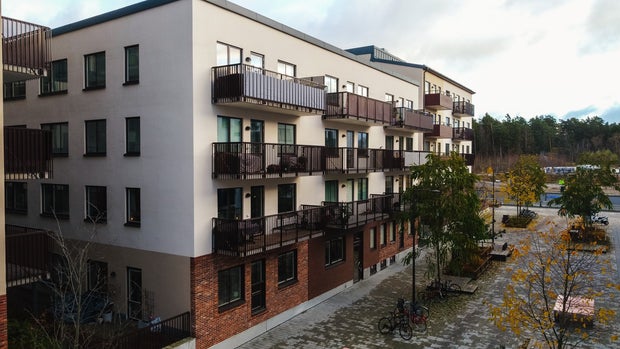Heba Fastighets AB: How a Real Estate Company Became a Digital Pioneer
Updated: September 16, 2025, 10:17 AM
Published: September 11, 2025, 3:16 PM
Imagine buildings that communicate, systems that anticipate problems, and data that drives efficiency. This is the reality Heba Fastighets AB has created.
By leveraging digital twins and real-time monitoring, Heba is proactively addressing issues before they escalate. They are setting a new standard in an industry often resistant to change.
A perpetually malfunctioning elevator on Friday nights or a washing machine breaking down at the worst possible moment – Heba aims to eliminate these common frustrations. The company has developed a digital infrastructure where properties are not only managed but also continuously monitored, analyzed, and self-learning.
“Our goal is to identify problems before they even occur,” explains CEO Patrik Emanuelsson. “Digitalization allows us to be more effective, benefiting both our tenants and our employees.”
Heba’s digital transformation has been a gradual process. It began with centralized data repositories, providing up-to-date information on each property accessible to the entire organization. The next step involved creating digital twins – detailed 3D models that enable technicians to examine every aspect of a building, from installation serial numbers to predicting when a component needs servicing or replacement.
“This connects the building structurally and gives us control over the details,” says Emanuelsson. “Everyone can work from the same information, instead of wasting time searching for answers.”

Maintenance requests are analyzed in real-time, revealing patterns that would otherwise go unnoticed – recurring issues, defects in a particular product, or renovation needs. Routine inspections are logged into the systems and compared over time. Furthermore, through IoT (Internet of Things) technology, critical machinery within the properties automatically reports when it is nearing failure.
“When we combine all these elements, we achieve what we call smart management: digital tools that support our operational activities,” he explains. “Instead of just a few eyes monitoring a property, we have dozens.”
The benefits extend beyond internal operations. Tenants experience fewer problems, faster response times, and a better-maintained living environment.
“We already have exceptionally high customer satisfaction and safety ratings, and digitalization allows us to maintain or even improve these levels,” Emanuelsson states.
A Green Stock, Five Years Ahead of Schedule
In recent years, Heba has increased its surplus ratio from 63 to 74 percent, placing the company among the industry leaders. Simultaneously, energy consumption has been reduced to 71 kilowatt-hours per square meter, despite two-thirds of the portfolio consisting of older buildings. The next target is set at 40 kilowatt-hours by 2030.
“We can monitor both surplus ratio and energy consumption in real-time, property by property. This allows us to focus on the biggest energy consumers and systematically reduce costs and emissions.”
This past summer, Heba achieved its goal of becoming a green stock, five years ahead of schedule. Today, over 80 percent of its revenue is linked to green properties.
“It happened faster than we anticipated, demonstrating the power of long-term, systematic efforts,” says Emanuelsson.
He has been a driving force behind this initiative. When he started in the industry as an IT manager in 2000, he wrote a report outlining how digital tools would shape the future of property management.
“Our industry is conservative, and traditional methods are deeply ingrained. Many also make the mistake of focusing on systems rather than the actual information needed. We have succeeded because we prioritized structure, analysis, and preventative measures, not just IT for the sake of IT.”
With digital twins and shared data repositories, collaboration becomes more seamless. Finance, project management, and operations all access the same information and can act in unison. The traditional boundaries between departments are blurring.
“Property management is inherently predictable. Buildings stand for centuries, and we know exactly what will happen, just not when or where. Digital tools allow us to detect anomalies early and work more effectively together,” Emanuelsson explains.
While buildings may be predictable, the future demands new ways of working and new talent.
“The next generation of employees has different skills and expectations. If we asked them to go out and check what’s wrong with a building, they would probably shut down their computer and never come back. The old way of wearing out shoe leather is outdated,” concludes Emanuelsson.
Keep in mind that investments can both increase and decrease in value. Historical returns are not a guarantee of future returns. Investors may lose their invested capital.
This article was produced by Brand Studio in collaboration with Heba Fastighets AB.
Enjoyed this post by Thibault Helle? Subscribe for more insights and updates straight from the source.


